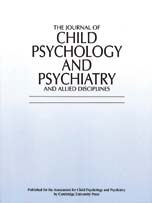No CrossRef data available.
Annotation: The Cognitive Neuroscience of Face Recognition: Implications for Developmental Disorders
Published online by Cambridge University Press: 01 October 2001
Abstract
Face recognition is often considered to be a modular (encapsulated) function. This annotation supports the proposal that faces are special, but suggests that their identification makes use of general-purpose cortical systems that are implicated in high-level vision and also in memory and learning more generally. These systems can be considered to function within two distinct cortical streams: a medial stream (for learning and salience of faces encountered) and a lateral stream (for distributed representations of visual properties and identities of faces). Function in the lateral stream, especially, may be critically dependent on the normal development of magnocellular vision. The relevance of face recognition anomalies in three developmental syndromes (Autism, Williams syndrome, and Turner syndrome) and the two-route model sketched above is considered.
Keywords
- Type
- Annotation
- Information
- The Journal of Child Psychology and Psychiatry and Allied Disciplines , Volume 42 , Issue 6 , September 2001 , pp. 705 - 717
- Copyright
- © 2001 Association for Child Psychology and Psychiatry


